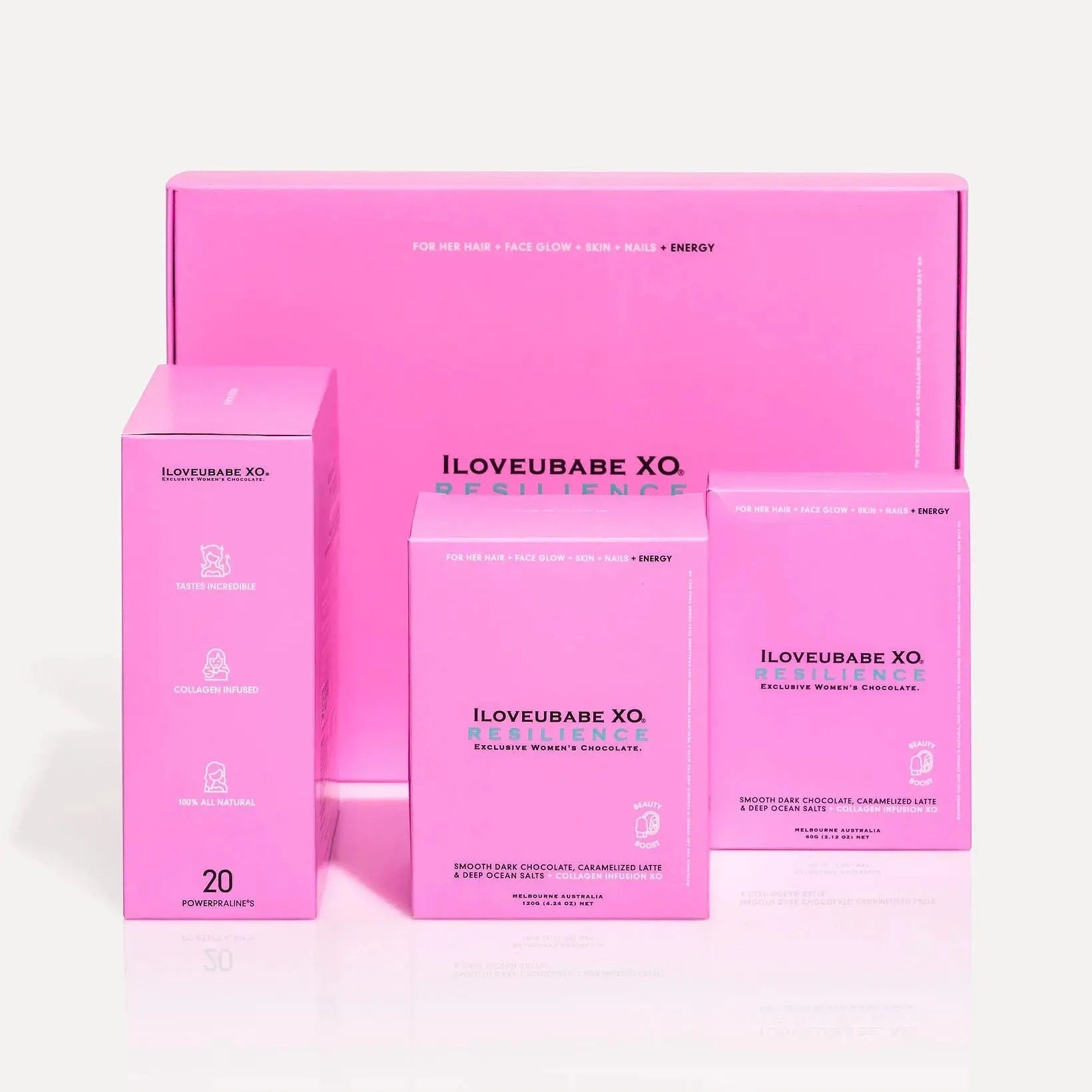
Understanding Cocoa Solids: Production, Properties, and Nutrition
If you’ve ever read the back of our chocolates, chances are you’ve seen the term “cocoa solids”. But what exactly are cocoa solids, and why do they matter so much in flavour and health?
Whether you’re looking for the perfect collagen chocolate or shopping for cocoa butter, cocoa solids are part of the bean that delivers that rich, chocolatey punch - minus the fat.
Want to know more? ILOVEUBABE XO is breaking it down.
What Are Cocoa Solids?
To put it simply, cocoa solids are the solid parts of the cacao bean that have been extracted and separated from the fat (usually through the Broma process or mechanical pressing).
What's left behind is the cocoa solids, a dry powder, which we then grind down into cocoa powder, which is used in baking, drinks, supplements and chocolate production. They’re responsible for chocolate's taste, smell, and its nutritional value - including antioxidant-rich flavonoids.
So, the next time you hear “What are cocoa solids?” just think of the chocolatey part without the butter.
Production of Cocoa Solids
The journey starts with traditional cocoa varieties, usually grown in tropical climates. After harvesting, cocoa beans are fermented, dried, roasted, and cracked open. The inner part (called the nib) is then ground into a thick paste known as chocolate liquor.
From here, the liquor is either:
- Pressed to remove cocoa butter, leaving behind a dry cake of cocoa solids
- Naturally separated using the Broma process.
Different methods of separating and treating cocoa solids affect their flavour, acidity and colour, which is why you’ll often see terms like “natural cocoa” or “Dutch process” on chocolate packaging.
Physical Properties of Cocoa Powder
Cocoa powder made from cocoa solids is dry, fine and slightly bitter. It’s typically dark brown, but the colour can range from light reddish-brown to nearly black, depending on how it’s processed.
Cocoa solids don’t melt like chocolate does; they’re not oily or creamy. That’s because all or most of the cocoa butter has been removed. , so what’s left is a concentrate of cocoa flavour, antioxidants, and minerals.
These properties make cocoa powder ideal for recipes where you need full chocolate flavour without the extra fat.
Natural Cocoa Powder
Natural cocoa powder is made from cocoa solids that haven’t been treated with an alkalising agent. It has a slightly acidic pH and a sharp, intense flavour.
This type of cocoa powder is common in baking soda recipes, which helps neutralise the acidity and create rise. Natural cocoa tends to be lighter in colour and has a fruitier, more complex taste.
If you’re going for that bold, classic chocolate flavour in your baking, natural cocoa is your best friend.
Dutch Process
Dutch process cocoa (also known as Dutch cocoa or alkalised cocoa) is made by treating cocoa solids with an alkaline substance to reduce acidity.
This process, known as Dutching, darkens the powder and gives it a smoother, more mellow flavour. Dutch cocoa is often used in chocolate drinks, baking mixes, and premium chocolate bars. Because of the altered pH, it works better with baking powder than baking soda, so if your recipe calls for Dutch cocoa, it’s best not to swap it for natural unless you know what you’re doing.
Dutching also changes the nutritional profile a little, often lowering the flavonoid content. But it still brings that rich, deep chocolate taste people love.
Nutritional Value of Cocoa Powder
Cocoa solids are loaded with good stuff. While they don’t contain the fats of cocoa butter, they offer a decent amount of dietary fibre, protein, iron, magnesium, and potassium.
In a typical tablespoon of unsweetened cocoa powder, you’ll find:
- Around 2 grams of fibre
- A small amount of iron and magnesium
- Minimal sugar unless it’s sweetened post-processing
Low in calories but high in flavour, it’s a popular choice for both food and supplements. That’s why we’ve focused so much on creating 100% natural, gluten-free, collagen-infused beauty chocolate - all with less than 56 calories per serving. It’s a super easy (and delicious) way to get your daily chocolate fix while supporting your skin, mood, and energy
Flavonoids and Health Benefits
One of the biggest perks of cocoa solids is their flavonoid content. Flavonoids are natural plant compounds that have antioxidant and anti-inflammatory properties.
Research suggests they may help:
- Support heart health
- Improve blood flow
- Boost brain function
- Reduce inflammation
That said, the amount of flavonoids varies depending on the chocolate processing methods used. Natural cocoa powder usually contains more than others because the alkalisation process can break down some of those beneficial compounds.
So, if you’re in it for the antioxidants, opt for raw or minimally processed cocoa solids whenever possible.
Why Cocoa Solids Matter
From baking and beauty to brain health and antioxidants, cocoa solids are one of the most valuable parts of the cocoa bean. They’re flavour-rich, nutrient-packed, and essential to the chocolate experience.
Whether you’re working with the Dutch process, shopping out collagen chocolates, or curious about how cocoa solids compare to cocoa butter, knowing the basics helps you make better choices - for taste and wellness.
Shop Collagen Infused Chocolate Gift Boxes
FIND HER PERFECT GIFT NOW
Guilt-Free Chocolate That Tastes Incredible XO












